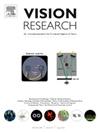Facilitation beyond suppression: Enhanced direction discrimination after bidirectional motion adaptation
IF 1.4
4区 心理学
Q4 NEUROSCIENCES
引用次数: 0
Abstract
This study investigates how unidirectional and bidirectional motion adaptation affects direction discrimination sensitivity using a rotational motion paradigm. Participants adapted to rotating log-spiral stimuli under three conditions: clockwise, counterclockwise, or bidirectional (opposing directions simultaneously). They then performed a direction discrimination task, judging whether a briefly presented test stimulus rotated clockwise or counterclockwise. Unidirectional adaptation decreased sensitivity and induced a directional bias, consistent with the suppressive effects of adaptation and the waterfall motion illusion. In contrast, bidirectional adaptation enhanced direction discrimination sensitivity without introducing directional bias. These findings challenge traditional models of motion adaptation that emphasize direction-specific suppression. Instead, they support a dynamic, resource-based account in which the visual system actively recalibrates sensitivity to optimize performance based on the distribution of motion stimuli in the environment.
超越抑制的促进:双向运动适应后的方向辨别增强
本研究探讨了单向和双向运动适应如何影响旋转运动模式下的方向识别灵敏度。参与者适应在三种条件下旋转对数螺旋刺激:顺时针、逆时针或双向(同时相反的方向)。然后,他们执行一个方向辨别任务,判断一个短暂呈现的测试刺激是顺时针旋转还是逆时针旋转。单向适应降低了敏感性并引起了方向性偏差,这与适应的抑制效应和瀑布运动错觉一致。双向自适应在不引入方向偏置的情况下提高了方向识别灵敏度。这些发现挑战了强调方向特异性抑制的传统运动适应模型。相反,它们支持一种动态的、基于资源的解释,在这种解释中,视觉系统主动重新校准灵敏度,以根据环境中运动刺激的分布来优化性能。
本文章由计算机程序翻译,如有差异,请以英文原文为准。
求助全文
约1分钟内获得全文
求助全文
来源期刊

Vision Research
医学-神经科学
CiteScore
3.70
自引率
16.70%
发文量
111
审稿时长
66 days
期刊介绍:
Vision Research is a journal devoted to the functional aspects of human, vertebrate and invertebrate vision and publishes experimental and observational studies, reviews, and theoretical and computational analyses. Vision Research also publishes clinical studies relevant to normal visual function and basic research relevant to visual dysfunction or its clinical investigation. Functional aspects of vision is interpreted broadly, ranging from molecular and cellular function to perception and behavior. Detailed descriptions are encouraged but enough introductory background should be included for non-specialists. Theoretical and computational papers should give a sense of order to the facts or point to new verifiable observations. Papers dealing with questions in the history of vision science should stress the development of ideas in the field.
 求助内容:
求助内容: 应助结果提醒方式:
应助结果提醒方式:


